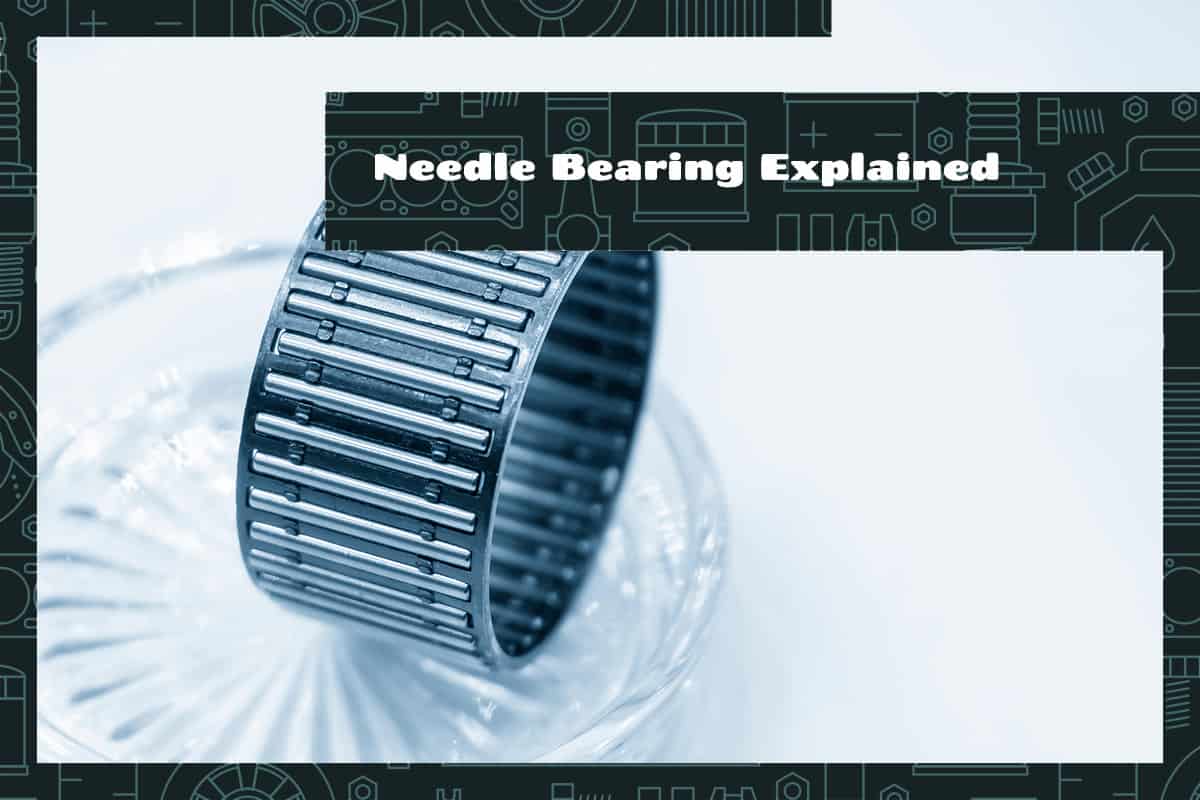The world of cars is complex, full of numerous parts that keep our vehicles running smoothly. One of these crucial parts is the needle bearing, a small but significant component that you may have never heard of.
Needle bearings are specialized types of bearings featuring slender, cylindrical rollers. They are used to reduce friction and handle heavy loads in car parts like transmissions and wheel hubs, ensuring your vehicle runs smoothly.
In this guide, we’ll dive into the fascinating world of needle bearings. We’ll explore their anatomy, types, and functions in cars.
Detailed Anatomy of a Needle Bearing
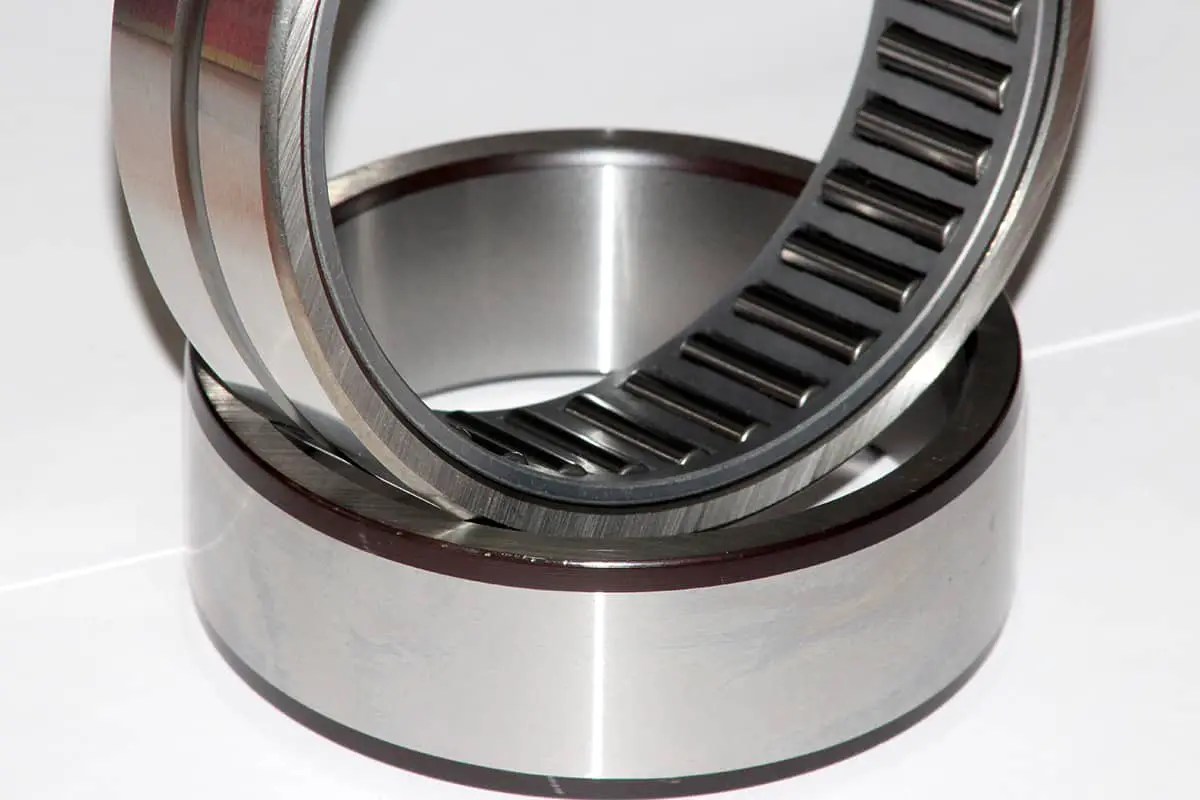
Needle bearings are vital parts in many machines, especially in cars. To better understand how they function, let’s delve into their anatomy or structure, which is made up of four key components: the inner ring, the outer ring, the cage, and the rollers.
1. Inner Ring
The inner ring of a needle bearing is a cylindrical component that is usually mounted onto a shaft. This ring interacts directly with the shaft and ensures the movement of the bearing is aligned with the shaft’s rotation. When a bearing is under load, it’s the inner ring that primarily carries the weight, as it’s in direct contact with the rotating or moving part.
2. Outer Ring
The outer ring is the counterpart to the inner ring. It’s a ring-shaped component that houses the inner ring, the cage, and the rollers. The outer ring generally interfaces with the part of the machine that doesn’t move, often referred to as the “housing.” The outer ring also prevents the internal components from detaching, keeping the entire assembly intact.
3. Cage
The cage of a needle bearing keeps the rollers evenly spaced apart and aligned. Without the cage, the rollers could collide with each other, causing unwanted friction, potential damage, and a decrease in bearing efficiency. The cage ensures the rollers move freely and correctly along the path defined by the inner and outer rings.
4. Rollers
These are the slender, cylindrical components that give the needle bearing its name. Rollers rotate between the inner and outer rings, reducing friction and supporting the load the bearing is subjected to. Their slim, elongated design allows them to handle higher loads than ball bearings, which have smaller contact points.
Different Types of Needle Bearings
Needle bearings come in various types, each with specific designs suited to particular applications. Here, we’ll explore four major types of needle bearings.
1. Drawn Cup Needle Roller Bearings
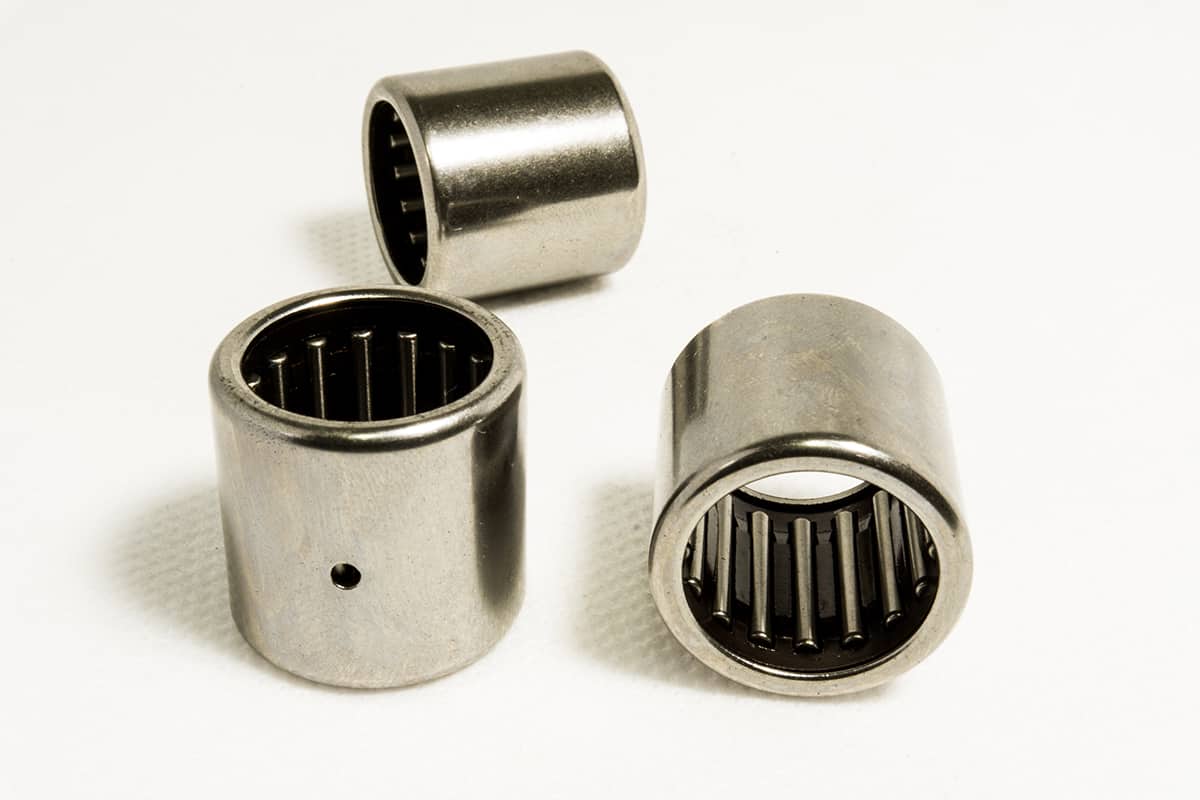
Drawn Cup Needle Roller Bearings are the most basic type of needle bearings. They’re known for their thin, cup-shaped outer ring that’s ‘drawn’ from a precisely formed sheet of steel. This design makes them lightweight and compact, perfect for spaces where weight and room are at a premium. Despite their size, they’re pretty tough, capable of handling high load capacities thanks to the large number of rollers packed into the cup.
2. Heavy Duty Needle Roller Bearings
As the name suggests, Heavy Duty Needle Roller Bearings are designed to take on heavier loads. They feature thicker and sturdier rings and a high number of long and narrow rollers. This design provides greater load-carrying capacity and durability, even under harsh conditions.
3. Needle Roller Bearings with Ribs
Needle Roller Bearings with Ribs are a unique type of needle bearing. They’re designed with additional ribs on the inner or outer ring. These ribs guide the rollers and keep them in position, preventing any skewing during operation.
4. Needle Thrust Bearings
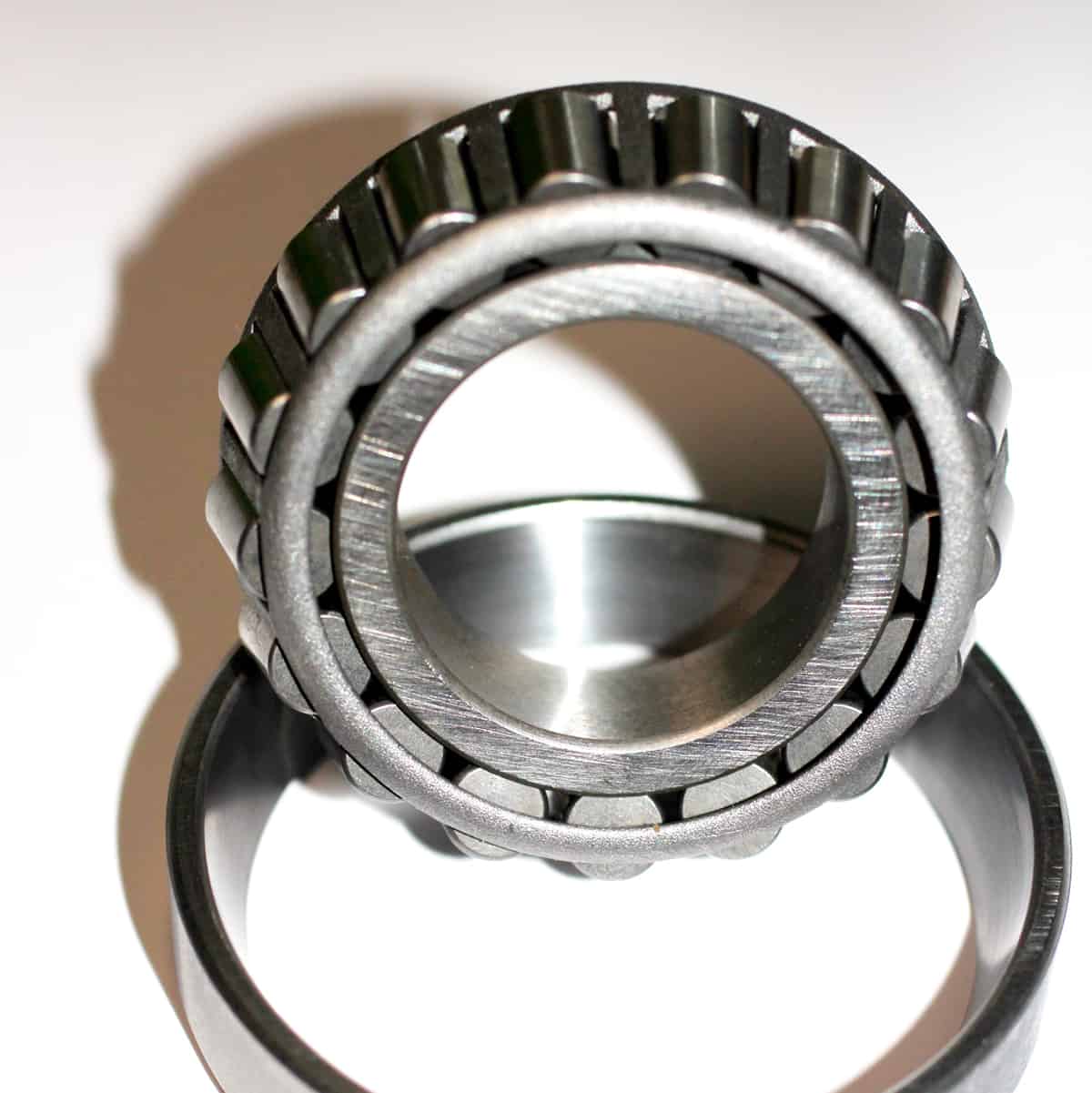
Needle Thrust Bearings are a special kind of needle bearing designed to handle axial or thrust loads – the loads that come at them sideways rather than from above or below. These bearings have a minimum height but a high load capacity, thanks to the arrangement of rollers parallel to the axis.
The Role of Needle Bearings in Cars
You might not see them, but they’re working hard behind the scenes in many components of your vehicle. Let’s take a look at the role of needle bearings in three main areas: the transmission, the wheel hubs, and the CV joints.
1. Needle Bearings in the Transmission
The transmission is responsible for transferring the power generated by the engine to the wheels, enabling the car to move. Needle bearings are used extensively in transmission because they can handle the heavy loads and high speeds involved.
In manual transmissions, needle bearings sit between the gears on the shafts, allowing the gears to spin freely with minimal friction. In automatic transmissions they’re found in the torque converter, a device that smoothly transfers power from the engine to the transmission. They reduce friction during this transfer, ensuring that your car operates efficiently and smoothly.
2. Needle Bearings in the Wheel Hubs
The wheel hubs are part of the wheel assembly where the wheels attach to the car. Needle bearings, specifically tapered roller bearings, are commonly used here. They help support the weight of the car and handle both radial (vertical) and axial (horizontal) loads as the car moves or turns.
The needle bearings in the wheel hubs reduce friction as the wheels spin, ensuring that your ride is smooth. They also help distribute the weight of the car evenly across the wheels, which is crucial for maintaining the car’s balance and stability, especially when turning or driving on uneven surfaces.
3. Needle Bearings in the CV Joints
CV joints, or constant velocity joints, are part of the driveshaft, which delivers power from the transmission to the wheels. The CV joints allow the driveshaft to transmit power effectively, even when it’s not in a straight line, like when your car is turning or going over bumps.
Needle bearings are used in CV joints because they can handle the combination of high speed and force within these joints. They ensure that the joint can rotate smoothly while withstanding the force transmitted through the driveshaft. This function is crucial for maintaining a consistent driving speed, particularly when the car is steering or driving over uneven terrain.
How Needle Bearings Work
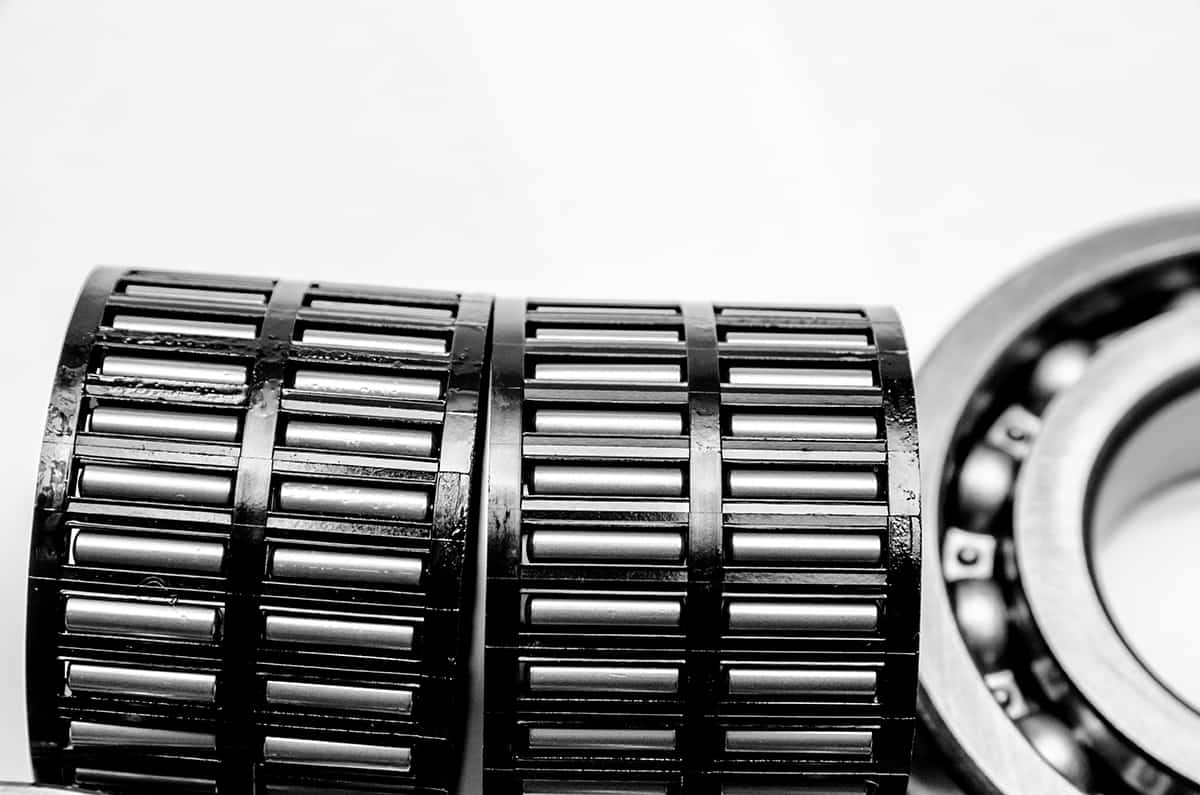
Needle bearings are all about reducing friction and handling heavy loads. Let’s take a closer look at how these two key functions are achieved: through Rolling Motion and Load Distribution.
Rolling Motion
Rolling motion is at the core of how needle bearings work. The cylindrical rollers in the bearing roll reduce friction. This rolling motion allows parts of the machine (like gears in a car) to move smoothly without much resistance.
The rollers are kept evenly spaced by the cage, which also helps to prevent them from colliding and creating more friction. The inner and outer rings of the bearing provide the track for these rollers, guiding their rolling motion and ensuring they stay in place.
Load Distribution
The cylindrical rollers in the needle bearing are key to this load distribution. Because they’re long and thin, they provide a larger contact area with the inner and outer rings of the bearing compared to ball bearings. This larger contact area means the load is spread out over more points, allowing the bearing to handle higher loads.
